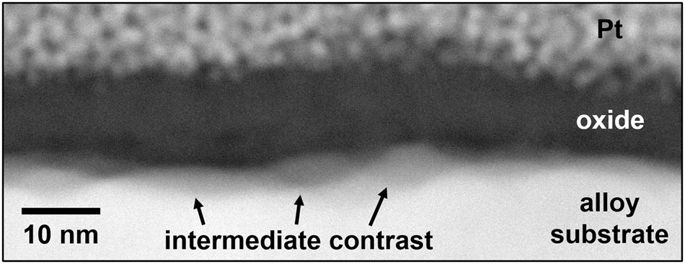npj Materials Degradation ( IF 6.6 ) Pub Date : 2018-09-05 , DOI: 10.1038/s41529-018-0046-1 Richard P. Oleksak , Monica Kapoor , Daniel. E. Perea , Gordon R. Holcomb , Ömer N. Doğan

|
An improved understanding of high-temperature alloy oxidation is key to the design of structural materials for next-generation energy conversion technologies. An often overlooked, yet fundamental aspect of this oxidation process concerns the fate of the metal vacancies created when metal atoms are ionized and enter the growing oxide layer. In this work, we provide direct experimental evidence showing that these metal vacancies can be inseparably linked to the oxidation process beginning at the very early stages. The coalescence of metal vacancies at the oxide/alloy interface results initially in the formation of low-density metal and eventually in nm-sized voids. The simultaneous and subsequent oxidation of these regions fills the vacated space and promotes adhesion between the growing oxide and the alloy substrate. These structural transformations represent an important deviation from conventional metal oxidation theory, and this improved understanding will aid in the development of new structural alloys with enhanced oxidation resistance.
中文翻译:

金属空位在合金高温氧化中的作用
对高温合金氧化的深入了解是设计下一代能量转换技术的结构材料的关键。该氧化过程的一个经常被忽视但又基本的方面涉及当金属原子被离子化并进入生长的氧化物层时所产生的金属空位的命运。在这项工作中,我们提供了直接的实验证据,表明这些金属空位可以在非常早期的阶段就与氧化过程密不可分。金属空位在氧化物/合金界面处的聚结最初导致形成低密度金属,最终导致纳米级的空隙。这些区域的同时氧化和随后的氧化填充了空出的空间,并促进了正在生长的氧化物和合金基底之间的粘附。











































 京公网安备 11010802027423号
京公网安备 11010802027423号